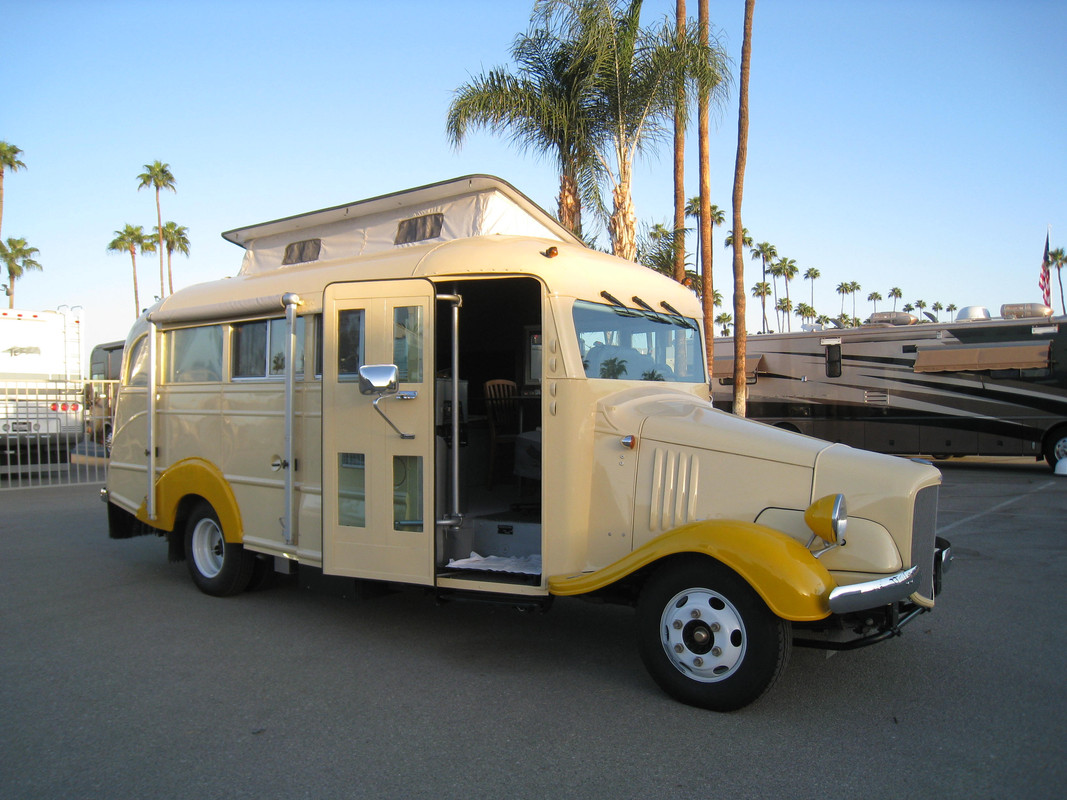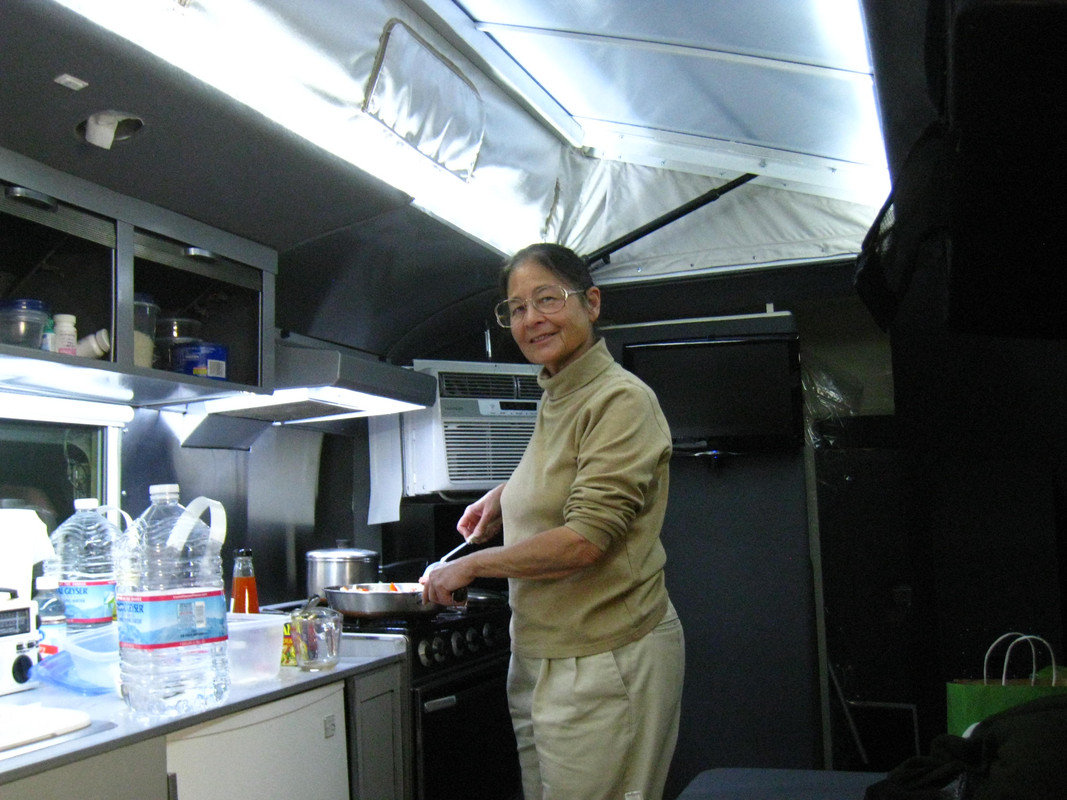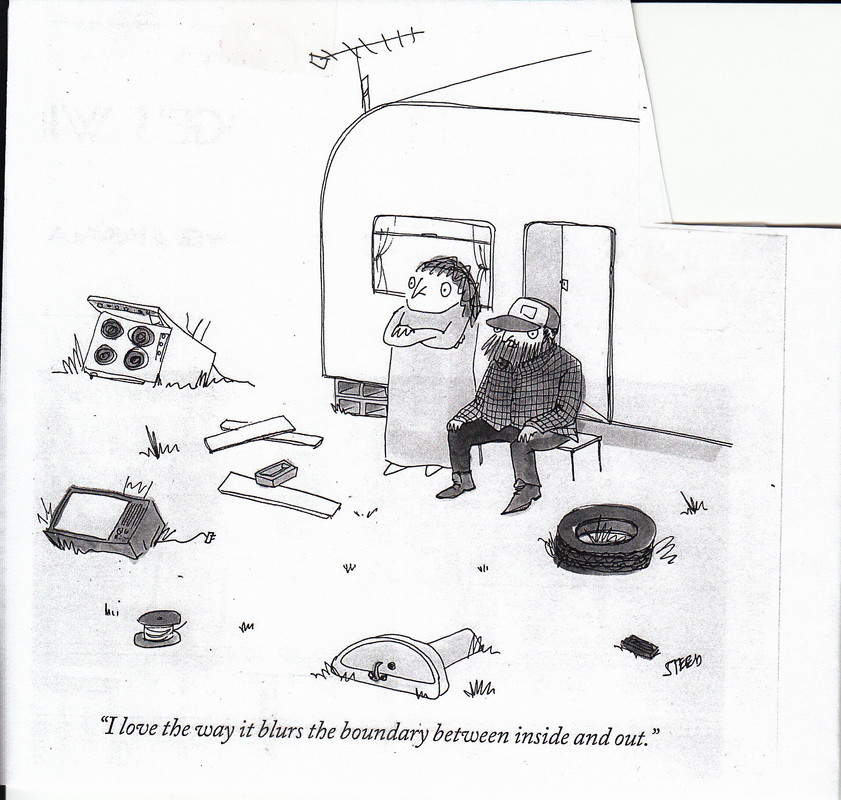 |
|
 09-21-2020, 05:39 PM
09-21-2020, 05:39 PM
|
#1
|
|
Mini-Skoolie
Join Date: Sep 2014
Posts: 13
Year: 1963
Chassis: Ford B-500
Engine: 223 inline 6
|
1963 Ford B500 short and tall- vent on the roof?
Hi,
New guy here, but I've been checking the forums out for a long time.
I've owned the "Happy Bus" for years. Always road worthy (slow and steady) she was my home for a couple years, but she's been sitting for quite sometime.
I'm wondering about the "roof vent". Does anyone know it's purpose? Does it drain somewhere? This is a raised roof Superior Body.
I've included pictures. You'll see the Happy Bus on a tow truck... but it won't be long until she has new brakes, tires and a bath.
Any help is much appreciated.
|

|

|
 09-21-2020, 05:45 PM
09-21-2020, 05:45 PM
|
#2
|
|
Traveling
Join Date: Sep 2013
Location: Virginia
Posts: 2,302
Year: None
Coachwork: None
Chassis: None
Engine: None
Rated Cap: None
|
Likely the roof vent is just that -- a vent to allow air in and out through the ceiling for temperature control, like a 4-65 air conditioner - 4 windows down, 65 mph... Remember, air-conditioning was a luxury in 1963, and most trucks that these buses were based didn't even offer it. Measure it carefully, that may be a good location to install a rooftop A/C unit such as a Coleman Mach series.
|

|

|
 09-21-2020, 06:00 PM
09-21-2020, 06:00 PM
|
#3
|
|
Mini-Skoolie
Join Date: Sep 2014
Posts: 13
Year: 1963
Chassis: Ford B-500
Engine: 223 inline 6
|
Thanks for the quick reply!
My pic isn’t very good, but this vent is on the front end of the bus roof. It’s centered on the roof close to the front roof marker lights. I’m in Alaska so A/C has never been imperative though at times it would be nice.
I’m more concerned the vent could allow water in and am unsure where water would go if it did enter the vent. The last pic is the interior roof not far from the driver’s position. Any idea if vents had drain passages?
|

|

|
 09-21-2020, 06:04 PM
09-21-2020, 06:04 PM
|
#4
|
|
Bus Geek
Join Date: Sep 2017
Location: Swansboro,NC
Posts: 2,988
Year: 86
Coachwork: Thomas
Chassis: Ford B700
Engine: 8.2
Rated Cap: 60 bodies
|
cheese wagon beat me to it.
remember heat rises and even though they are probably small while parked they by design and i have tested mine actually when driving they draw the air off of the top of the ceiling using a draft effect.
to me useless when parked and minimal when driving especially when you can open windows.
but they do work in there design when driving.
|

|

|
 09-21-2020, 06:13 PM
09-21-2020, 06:13 PM
|
#5
|
|
Bus Geek
Join Date: May 2009
Location: Columbus Ohio
Posts: 18,846
Year: 1991
Coachwork: Carpenter
Chassis: International 3800
Engine: DTA360 / MT643
Rated Cap: 7 Row Handicap
|
they were passive roof vents.. even many modern busses have them.. they were designed to exhaust warm humid air from the top of the bus and help sucxk air in the defrost fresh-air vent.. it does the most when you are driving in rainy or cold weather and have the windows closed..
ventilation occurs naturally when you have windows open.. the driver window almost always creates a suction point due to the left side mirrors..
if that vent leaks or you dont want it, it doesnt hurt to remove it. since i have Air-Conditioning I taped over mine on both of those busses.. I can use my air conditioner to dehumidify when needed or open the window..
-Christopher
|

|

|
 09-21-2020, 06:13 PM
09-21-2020, 06:13 PM
|
#6
|
|
Bus Geek
Join Date: Sep 2017
Location: Swansboro,NC
Posts: 2,988
Year: 86
Coachwork: Thomas
Chassis: Ford B700
Engine: 8.2
Rated Cap: 60 bodies
|
Quote:
Originally Posted by tork

Thanks for the quick reply!
My pic isnít very good, but this vent is on the front end of the bus roof. Itís centered on the roof close to the front roof marker lights. Iím in Alaska so A/C has never been imperative though at times it would be nice.
Iím more concerned the vent could allow water in and am unsure where water would go if it did enter the vent. The last pic is the interior roof not far from the driverís position. Any idea if vents had drain passages?
|
probably not and for your location i would say its better to seal it outside or repurpose the opening with something you know?
where in AK my wife is in fairbanks and was there until november but just got extended until february.
if you are close she wouldnt mind seeing it.
not as cool as yours but i am working on building her a shortie for her traveling labtech/nurse work. but we just started hers.
good luck its a beautiful classic?
wanna trade?
|

|

|
 09-21-2020, 07:01 PM
09-21-2020, 07:01 PM
|
#7
|
|
Bus Geek
Join Date: Apr 2012
Location: So Cal
Posts: 3,231
Year: 1935
Coachwork: Superior
Chassis: Chevy
Engine: 317 ci/tid / Isuzu
|
My '35 Superior bus body had a similar vent set up.
 .
.jpg) .
I welded up the hole.
 .
There was a baffle between the outer roof and the inner roof that directed water to the "U" shaped arches over the windshield and from there to the channel above the windshield and finally to the "A" pillars and out the bottom.
 .
Jack 
|

|

|
 09-21-2020, 08:32 PM
09-21-2020, 08:32 PM
|
#8
|
|
Mini-Skoolie
Join Date: Sep 2014
Posts: 13
Year: 1963
Chassis: Ford B-500
Engine: 223 inline 6
|
JR 223- thanks. I'm in Anchorage, about 350 miles south. In a Fairbanks summer A/C is needed. It gets darn hot up there!
ol trunt- wow and I thought the sunroof on my '58 VW bus was big! Nice project you have there.
Raindrops make their way into the marquis area above the windshields (where a "destination sign" might be posted). I will investigate because maybe the passages for the roof vent's overflow are clogged and not allowing water to reach the A pillars, but instead send the water along an easier path. I thought the front marker lights were the culprit, but they looked really dry when I pulled the lenses off. I'm suspecting the vent...
|

|

|
 09-21-2020, 09:00 PM
09-21-2020, 09:00 PM
|
#9
|
|
Mini-Skoolie
Join Date: Sep 2014
Posts: 13
Year: 1963
Chassis: Ford B-500
Engine: 223 inline 6
|
ol trunt-
I just noticed on your Skoolie ID that your 1935 looks to be complete and not the project I thought it was in your response to my post. Are there pics of your finished 1935 you've shared? I'd sure like to see some!
|

|

|
 09-21-2020, 09:23 PM
09-21-2020, 09:23 PM
|
#10
|
|
Traveling
Join Date: Sep 2013
Location: Virginia
Posts: 2,302
Year: None
Coachwork: None
Chassis: None
Engine: None
Rated Cap: None
|
Quote:
Originally Posted by tork

Thanks for the quick reply!
My pic isnít very good, but this vent is on the front end of the bus roof. Itís centered on the roof close to the front roof marker lights. Iím in Alaska so A/C has never been imperative though at times it would be nice.
Iím more concerned the vent could allow water in and am unsure where water would go if it did enter the vent. The last pic is the interior roof not far from the driverís position. Any idea if vents had drain passages?
|
There is likely a damper that can be closed to prevent rain from getting in.
|

|

|
 09-21-2020, 09:23 PM
09-21-2020, 09:23 PM
|
#11
|
|
Traveling
Join Date: Sep 2013
Location: Virginia
Posts: 2,302
Year: None
Coachwork: None
Chassis: None
Engine: None
Rated Cap: None
|
Jack - me likey. 
|

|

|
 09-21-2020, 11:01 PM
09-21-2020, 11:01 PM
|
#12
|
|
Bus Geek
Join Date: Apr 2012
Location: So Cal
Posts: 3,231
Year: 1935
Coachwork: Superior
Chassis: Chevy
Engine: 317 ci/tid / Isuzu
|
Thanks. No dampers but a clever between roof panel troughing system that runs water down through the side and roof bows to the outside below the floor. The only serious rust I found in the bus was at the right rear corner floor area where the tail light gasket had failed--it welded right up.
Now that you mention dampers there were slideable dampers in the side cowl vents (first pic). I'm sure that those vents were OK with the original 45 mph splash lube six cyl, manual 4 spd trans and two speed rear axle drive train but with the new drive train at 65 mph those vents made such a roar that I filled them in to quiet things down enough to allow for a conversation with a passenger!
Tork, here are some pics:
 .
 .
 .
 .
Jack 
|

|

|
 09-23-2020, 03:46 PM
09-23-2020, 03:46 PM
|
#13
|
|
Mini-Skoolie
Join Date: Sep 2014
Posts: 13
Year: 1963
Chassis: Ford B-500
Engine: 223 inline 6
|
You must have some blue ribbons. Sweet looking ride!! Love the three windshield wipers- are they stock? Way cool- thanks for sharing.
|

|

|
 09-23-2020, 04:24 PM
09-23-2020, 04:24 PM
|
#14
|
|
Bus Geek
Join Date: Sep 2017
Location: Swansboro,NC
Posts: 2,988
Year: 86
Coachwork: Thomas
Chassis: Ford B700
Engine: 8.2
Rated Cap: 60 bodies
|
hey TORX
my wife is working at the hospital in fairbanks right now and she just got extended until february.
if you are interested?.
i know she would like to see your shorty bus.
i just bought her one and going to try to have it built for her by the time she gets back. well the hard stuff anyway. she will do the finishes.
PM me with some contact info. and i will let you know when she has time.
|

|

|
 09-23-2020, 09:16 PM
09-23-2020, 09:16 PM
|
#15
|
|
Skoolie
Join Date: Jun 2017
Posts: 105
|
That is one nice looking vintage bus you've got there. Keep us posted on the work.
__________________
2002 E450 Thomas/ U-JOINT 4X4, family hauler
1954 Crown 35 foot RV conversion, guest house
1945? City Bus (unknown manufacture), yard art
1940s 'Binder 7 window, man cave
|

|

|
 09-24-2020, 07:20 PM
09-24-2020, 07:20 PM
|
#16
|
|
Mini-Skoolie
Join Date: Sep 2014
Posts: 13
Year: 1963
Chassis: Ford B-500
Engine: 223 inline 6
|
Hey Carnut-
She has potential! I'm trying to get the brakes completely redone, and new tires installed before I start working on any interior stuff, but I'll be sharing my journey with you Skoolies.
For the mechanical side of things I'm tapping the knowledge of the ford-truck enthusiasts forum and they have been very helpful.
What a journey I've begun.... Happy Bus sat for 23 years. I'm so ashamed.
Appreciate your comment-thanks!
|

|

|
 09-24-2020, 09:22 PM
09-24-2020, 09:22 PM
|
#17
|
|
Traveling
Join Date: Sep 2013
Location: Virginia
Posts: 2,302
Year: None
Coachwork: None
Chassis: None
Engine: None
Rated Cap: None
|
Something you might consider -- ol trunt mounted their bus body on a later model Isuzu NPR frame. Quite ingenious, I think - for a variety of reasons.
Ford supplied incomplete F53 (think FedEx / UPS trucks) and Econoline cutaway chassis (think U-Haul trucks) to Grumman and various coachwork manufacturers. You might poke around and see if a deal can be struck for such a setup with a trashed cab / body and intact mechanicals.
You'll end up with some nice upgrades like independent front suspension, disc brakes, power steering, modern powertrain, maybe even anti-lock brakes, for likely much less than reconditioning your current mechanicals would cost. Also would be able to make your build more roadworthy and ditch deadly liabilities like split rim wheels and other obsolete items that could force you to abandon your project for lack of ability to find parts to repair the 50-plus-year-old mechanicals and undercarriage. Tires may be easier to source as well.
Not to mention Ford's interchangeability is ridiculously tricky even within the same model year. Fantomworx ran into this trying to upgrade a 50s F-1 from a six-cylinder to a 239 flathead V-8. Two engine purchases, exhaust manifold issues, all kinds of problems in the process. They got it done, but I bet the owner wishes he'd found a later model chassis with a Windsor small-block or a 385-series big-block, maybe even a later model with a V10 or 4.6 / 5.4 modular (the three are actually the same design / architecture). I know the builder did.
And who knows, you might even be able to get a couple grand for your original bits if still serviceable.
|

|

|
 09-24-2020, 10:15 PM
09-24-2020, 10:15 PM
|
#18
|
|
Mini-Skoolie
Join Date: Sep 2014
Posts: 13
Year: 1963
Chassis: Ford B-500
Engine: 223 inline 6
|
Interesting, since I have a 2008 NPR cargo truck with a damaged box. It has a Chevy 6.0 and low miles.
The NPR truck has a 14' box and I believe Happy Bus is 19' from bumper to bumper. Would that work?
Clearly ol trunt has talent at fabrication and he may even have a shop. I have neither!
Thankfully my rims are not Widowmakers. I have new tires and I bet I can get the brakes/hardware done for under $1k. If all goes well I should be on the road next spring.
If things go sideways I'll consider the dream of a late model drivetrain under Happy Bus. That would be nice for sure....
Thanks for the suggestions.
|

|

|
 09-24-2020, 10:30 PM
09-24-2020, 10:30 PM
|
#19
|
|
Traveling
Join Date: Sep 2013
Location: Virginia
Posts: 2,302
Year: None
Coachwork: None
Chassis: None
Engine: None
Rated Cap: None
|
Quote:
Originally Posted by tork

Interesting, since I have a 2008 NPR cargo truck with a damaged box. It has a Chevy 6.0 and low miles.
The NPR truck has a 14' box and I believe Happy Bus is 19' from bumper to bumper. Would that work?
Clearly ol trunt has talent at fabrication and he may even have a shop. I have neither!
|
I would consider using it. The Isuzu chassis might require a slight chop or lengthening to match the wheelbase, but could work. It's easier than you might think - standard frame rail spacing on most truck chassis is 34 inches rail-to-rail. You can put a Peterbilt cab on an RV chassis if you want.
Measure center of drive axle hub to center of steer axle hub on each vehicle to find the scope of variance. If it's within a couple inches, moving the drive axle and/or lengthening / shortening the driveshaft could do the trick.
I'd consider it... Your factory setup will likely max out at 55 mph and get 4 mpg doing it. A 6.0 with a 6L80 / 6L90 will be much happier and a bit more efficient cruising at 70 mph interstate speeds. It will certainly make a difference in power and driveability. Does the Isuzu have cruise control? Enough of a reason right there.
Not to mention your 60s engine was designed for leaded fuel, no longer available. It would need an upgrade to hardened valve seats for modern unleaded fuel, not necessary for the 6.0, and a 2008 can be run on E15, something the original engine can't safely do regardless, as it isn't even designed for E10. The more I think about it, there are a ton of reasons to do it. An NPR truck isn't likely to have anti-theft either, making the swap easier.
|

|

|
 09-24-2020, 11:21 PM
09-24-2020, 11:21 PM
|
#20
|
|
Mini-Skoolie
Join Date: Sep 2014
Posts: 13
Year: 1963
Chassis: Ford B-500
Engine: 223 inline 6
|
I'll measure just for fun...ya never know what could happen. I hope it won't work 'cause I've got too much other stuff to do!
Here in Alaska there are no interstates and going 70 mph isn't really important unless you're in a hurry. And if you're in Happy Bus you ain't in a hurry!
I've had the bus since 1984 and the 223 six cylinder never missed a beat. Slow and steady and just shy of 8mpg. Now if I can just get her to stop...
Happy Bus is a rustic camper; nicer than a tent and more bear proof. And that extra headroom? A bonus.
I'll measure tomorrow and post the results. Yikes.
|

|

|
 |
|
 Posting Rules
Posting Rules
|
You may not post new threads
You may not post replies
You may not post attachments
You may not edit your posts
HTML code is Off
|
|
|
|
 » Recent Threads
» Recent Threads |
|
|
|
|
|
|
|
|
|
|
|
|
|
|
|
|
|
|
|
|
|
|
|
|
|
|
|
|
|
|
|
|
|
|
|
|
|